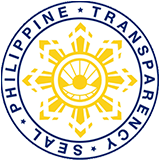In order to intensify government-citizen interactive feedback mechanism on social responsibility, the DSWD-NCR launched on November 2012 the @savestreekids twitter account, to reach-out children who are dwelling on the streets, through the related twitter posts of the netizens.
With this, zero incidence of street children sightings were recorded at Ortigas Avenue, San Juan City and Madrigal Avenue, Muntinlupa City.
Under this reach-out operation, rescued families were provided with counseling, medical assistance, transportation assistance (balik-probinsiya), inclusion to Modified Conditional Cash Transfer for Homeless Street Families (MCCT-HSF) program and endorsement to LGUs for availment of other social services.
Moreover, some 832 individuals were reached-out from the streets based on the reports of netizens in the twitter account from April 2013 to March 20, 2014. In case rescued individuals have no relatives in Metro Manila they were referred to DSWD centers and residential care facilities for temporary shelter and proper interventions.
DSWD-NCR also has a Comprehensive Program for Street Children, Families and Indigenous Peoples especially Sama-Bajau which was started in 2011. Under this, some 2,369 street children were provided with educational assistance while 710 families were provided with livelihood assistance.
Also, 267 street facilitators were employed and assigned in 17 Local Government Units (LGUs) to monitor, report, assess and conduct reach-out operations to street children, families and Sama-Bajau .
The comprehensive program which includes the operation of Task Force Kaagapay and Task Force Roxas Boulevard are joint effort of DSWD, Local Government Units (LGUs), National Government Agencies (NGAs), Non-Government Organizations (NGOs) and Faith-based Organizations (FBOs).
Meanwhile, since street families are not covered in the regular CCT program due to their mobility, the DSWD implemented the Modified Conditional Cash Transfer for Homeless Street Familes (MCCT-HSF) program in Metro Manila. This aims to mainstream street families to the regular CCT.
Following the regular CCT scheme, there are conditionalities that need to be complied with by the beneficiaries before they could receive their cash grants. The difference is that, MCCT-HSF beneficiaries were provided with six (6) months house rental assistance then after accessing them to livelihood or employment, half of the amount for the house rental should be shouldered by the household.
On the other hand, the P62.6 billion national budget of DSWD for the implementation of Pantawid Pamilya is for its operational costs and cash grants of the beneficiaries for 2014. The amount includes provision for the additional children-beneficiaries under the high school age coverage expansion of the program.
Nationwide, Pantawid Pamilya has 3, 996, 967 household beneficiaries and a target of 2, 127, 371 households for the expansion of the program.
The DSWD social workers and street facilitators are continuously reaching out to street children and families in NCR.



